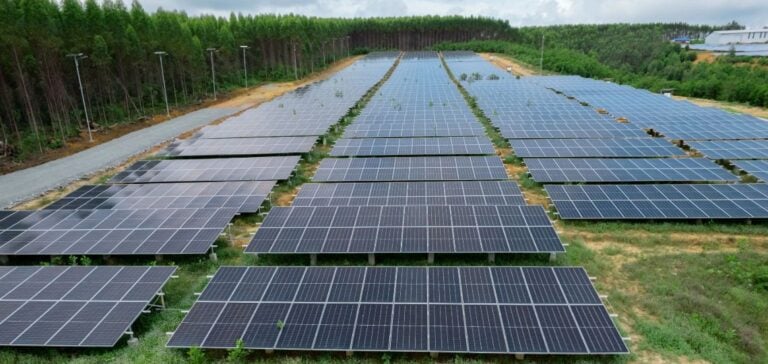Indonesia takes a significant step in its energy transition with the launch of its first solar power plant integrated with an energy storage system. Located in Nusantara, the project combines a 50-megawatt (MW) solar generation capacity with a 14.2 megawatt-hour (MWh) battery system. Developed on 87 hectares, this facility represents a pivotal move to diversify energy sources and stabilize the country’s electricity supply.
The project aligns with the government’s goal to achieve 23% renewable energy in the energy mix by 2025, an ambitious target requiring strategic investments and international collaboration.
A strategic collaboration
The development of this power plant stems from a partnership between PT Sembcorp Renewables Indonesia, a subsidiary of Sembcorp Industries, and PT PLN Nusantara Renewables, a branch of PLN Nusantara Power. Such public-private partnerships underscore the importance of cooperation in mobilizing financial and technological resources for Indonesia’s energy transition.
The integrated energy storage system addresses the intermittency of solar power production, ensuring a reliable and continuous energy supply. This approach is particularly crucial for meeting the energy demands of regions with underdeveloped grid infrastructure.
An economic and political stake
The project’s inauguration, attended by Indonesian President Prabowo Subianto, highlights its strategic importance. This solar power plant and its storage system are not merely environmental milestones; they also enhance Indonesia’s energy sovereignty by reducing reliance on imported fossil fuels.
Additionally, this project has the potential to attract international investments, a critical factor for scaling renewable energy solutions. The government hopes such infrastructure will serve as a springboard for similar collaborations, bolstering Indonesia’s standing in the regional energy market.
A model for Southeast Asia
The Nusantara project serves as a blueprint for similar initiatives in other parts of Indonesia and beyond. In Southeast Asia, where energy demand continues to rise, integrated solutions like this are seen as catalysts for improving energy competitiveness and meeting climate requirements.
By strengthening both local and regional energy capabilities, this project underscores the importance of strategic and planned energy infrastructure development to address current and future needs.






















